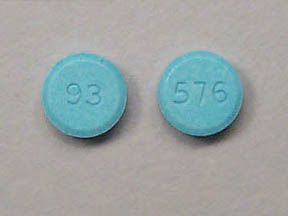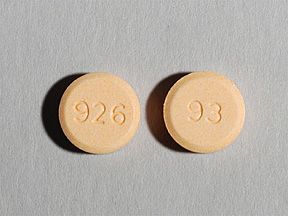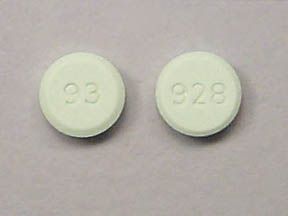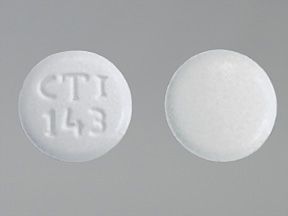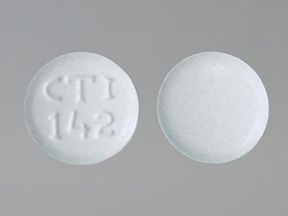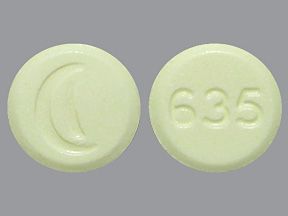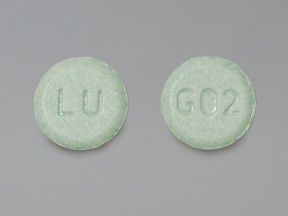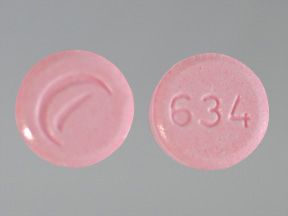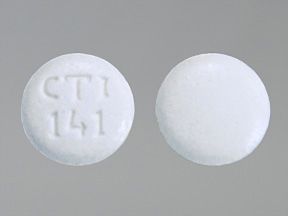Highlights for lovastatin
- Lovastatin oral tablet is available as a brand-name drug and a generic drug. Brand name: Altoprev.
- Lovastatin oral tablet comes in two forms: immediate-release tablet and extended-release tablet.
- Lovastatin is used to prevent and treat coronary heart disease. It’s also used to treat high cholesterol.
- Serious muscle damage warning: Using lovastatin raises your risk of serious muscle problems. These problems include myopathy, with symptoms that include muscle pain, tenderness, or weakness. Myopathy can lead to rhabdomyolysis. With this condition, muscle breaks down and can cause kidney damage and even death. If you have unexplained muscle pain or weakness, stop taking lovastatin right away and call your doctor.
- Liver disease warning: Use of lovastatin raises your risk of liver disease. Your doctor should check how well your liver is working before and during treatment with this drug. Drinking alcohol can increase your risk of liver problems from lovastatin. If you drink alcohol, talk to your doctor before starting this medication.
Lovastatin is a prescription drug. It comes as an immediate-release tablet and an extended-release tablet. An immediate-release drug goes into your bloodstream right away. An extended-release drug is slowly released into your bloodstream over time. Both of these tablets are taken by mouth.
The extended-release tablets are available as the brand-name drug Altoprev. The immediate-release tablets are available as a generic drug. Generic drugs usually cost less than the brand-name version. In some cases, they may not be available in every strength or form as the brand-name drug.
Lovastatin may be used as part of a combination therapy. This means you may need to take it with other medications.
Why it’s used
Lovastatin is used to decrease the amount of cholesterol and other fatty substances in your blood. If cholesterol builds up in your arteries, it may block the flow of blood to your heart, brain, or other parts of your body. This raises your risk of serious problems, such as a heart attack or stroke. Lowering your cholesterol level lowers these risks.
Also, if you have heart disease or are at an increased risk of it, this drug can help reduce the likelihood that you will need heart surgery.
How it works
Lovastatin belongs to a class of drugs called HMG-CoA reductase inhibitors. These are also called statins. A class of drugs is a group of medications that work in a similar way. These drugs are often used to treat similar conditions.
Lovastatin works by slowing the production of cholesterol in your body.
Lovastatin oral tablet doesn’t cause drowsiness, but it can cause other side effects.
More common side effects
The more common side effects that can occur with use of lovastatin include:
- pain in your stomach area
- nausea
- heartburn
- constipation
- headache
- weakness/lack of energy
- muscle pain
- memory loss/forgetfulness
- confusion
- inability to fall asleep
If these effects are mild, they may go away within a few days or a couple of weeks. If they’re more severe or don’t go away, talk to your doctor or pharmacist.
Serious side effects
Call your doctor right away if you have serious side effects. Call 911 if your symptoms feel life-threatening or if you think you’re having a medical emergency. Serious side effects and their symptoms can include the following:
- Muscle problems. Symptoms can include unexplained:
- muscle pain
- muscle tenderness
- muscle weakness
- Liver problems. Symptoms can include:
- dark-colored urine
- yellowing of your skin or whites of your eyes
- Stomach problems. Symptoms can include:
- pain in the upper right part of your stomach area
- nausea
- loss of appetite
- Central nervous system problems. Symptoms can include:
- lack of energy
- weakness
- extreme tiredness
- Skin problems. Symptoms can include:
- rash
- hives
- itching
- Bleeding problems. Symptoms can include:
- unusual bleeding or bruising
- Flu-like symptoms. Symptoms can include:
- fever
- body aches
- tiredness
- cough
- Hoarseness
Disclaimer: Our goal is to provide you with the most relevant and current information. However, because drugs affect each person differently, we cannot guarantee that this information includes all possible side effects. This information is not a substitute for medical advice. Always discuss possible side effects with a healthcare provider who knows your medical history.
Lovastatin oral tablet can interact with other medications, vitamins, or herbs you may be taking. An interaction is when a substance changes the way a drug works. This can be harmful or prevent the drug from working well.
To help avoid interactions, your doctor should manage all of your medications carefully. Be sure to tell your doctor about all medications, vitamins, or herbs you’re taking. To find out how this drug might interact with something else you’re taking, talk to your doctor or pharmacist.
Examples of drugs that can cause interactions with lovastatin are listed below.
Antibiotics
Taking certain antibiotics with lovastatin can cause high levels of lovastatin to build up in your body. This raises your risk of side effects from lovastatin, including serious muscle pain, weakness, and breakdown. These drugs should not be used with lovastatin.
Examples of these drugs include:
- clarithromycin
- erythromycin
Antifungal drugs
Taking certain antifungal drugs with lovastatin can cause high levels of lovastatin to build up in your body. This raises your risk of side effects from lovastatin, including serious muscle pain, weakness, and breakdown. These drugs should not be used with lovastatin.
Examples of these drugs include:
- itraconazole
- voriconazole
- ketoconazole
- posaconazole
[Production: Following section is new]
HIV drugs
Taking certain HIV drugs with lovastatin can cause high levels of lovastatin to build up in your body. This raises your risk of side effects from lovastatin, including serious muscle pain, weakness, and breakdown. These drugs should not be used with lovastatin.
Examples of these drugs include:
- protease inhibitors such as:
- ritonavir
- nelfinavir
- medications that contain cobicistat
Blood thinner
Warfarin is a type of blood thinner called an anticoagulant. When warfarin and lovastatin are taken together, this can increase the effects of warfarin. This raises your risk of bleeding. Your doctor should closely monitor your INR (a blood test) if you take warfarin with lovastatin.
Cholesterol drugs
Taking lovastatin with certain drugs used to lower cholesterol levels raises your risk of severe muscle problems. Some of these drugs should be avoided if you are taking lovastatin. Others may be used with careful monitoring. Talk to your doctor to find out if taking these drugs is safe for you. Examples of these drugs include:
- niacin
- gemfibrozil
- fibrates, such as:
- fenofibrate
- fenofibric acid
Gout drug
Colchicine is used to treat gout. Taking this drug with lovastatin raises your risk of serious muscle problems. These include muscle pain, weakness, and breakdown. Use this drug cautiously with lovastatin.
Heart drugs
Taking certain blood pressure and heart drugs with lovastatin raises your risk of serious muscle problems. These include muscle pain, weakness, and muscle breakdown. Your doctor may advise you to avoid these drug combinations. If you do take a heart drug with lovastatin, your doctor may lower your dosage of lovastatin. Examples of these heart drugs include:
- amiodarone
- diltiazem
- ranolazine
- verapamil
- dronedarone
Hormone therapy
Danozol is a hormone drug used to treat conditions such as endometriosis, breast disease, or angioedema. Taking this drug with lovastatin raises the risk of severe muscle problems. These problems include muscle pain, weakness, or breakdown. Your doctor may advise you to avoid this drug combination. If you do take this drug with lovastatin, your doctor may lower your dosage of lovastatin.
Immunosuppressant drug
Cyclosporine is used to suppress the immune system. It may be used to treat conditions such as rheumatoid arthritis or psoriasis. It may also be used after a solid organ transplant. Taking this drug with lovastatin raises your risk of serious muscle problems. This drug should not be used with lovastatin.
Ulcer drug
Cimetidine is used to treat ulcers and other gastrointestinal problems. When used with lovastatin, cimetidine can decrease the amount of natural steroids in the body. This can cause side effects such as tiredness, muscle weakness, reduced sex drive, or mood problems.
Disclaimer: Our goal is to provide you with the most relevant and current information. However, because drugs interact differently in each person, we cannot guarantee that this information includes all possible interactions. This information is not a substitute for medical advice. Always speak with your healthcare provider about possible interactions with all prescription drugs, vitamins, herbs and supplements, and over-the-counter drugs that you are taking.
This drug comes with several warnings.
Allergy warning
Lovastatin can cause a severe allergic reaction. Symptoms can include:
- trouble breathing or swallowing
- swelling of your face, throat, tongue, lips, eyes, hands, feet, ankles, or lower legs
- rash
- hives
- itching
If you develop these symptoms, call 911 or go to the nearest emergency room.
Don’t take this drug again if you’ve ever had an allergic reaction to it. Taking it again could be fatal (cause death).
Food interaction warning
Eating grapefruit or drinking grapefruit juice can increase the level of lovastatin in your body. This raises your risk of serious muscle pain or damage. Avoid drinking grapefruit juice or eating grapefruit while taking this drug.
Alcohol interaction warning
Drinking alcohol can increase your risk of liver problems from lovastatin. If you drink alcohol, tell your doctor before starting this medication.
Warnings for people with certain health conditions
For people with liver disease: If you have active liver disease, you should not take lovastatin. If you have a history of liver disease, your doctor will check how well your liver is working before and during treatment with this drug. If you have unexplained increases in your liver enzymes during treatment, your doctor will likely stop your use of this drug.
For people with kidney problems: You may be at an increased risk of side effects from lovastatin. This is especially true if your creatinine clearance is less than 30 mL/min.
Warnings for other groups
For pregnant women: Lovastatin should never be used during pregnancy. It can cause harm to a fetus due to its effects on how the body processes cholesterol and other substances.
Call your doctor right away if you become pregnant while taking this drug. Women of childbearing age should use reliable birth control while taking this drug.
For women who are breastfeeding: It is not known if lovastatin passes into breast milk. Other medications in this class pass into breast milk and can cause side effects in a child who is breastfed.
Talk to your doctor if you breastfeed your child. You may need to decide whether to stop breastfeeding or stop taking this medication.
For seniors:
- The kidneys of older adults may not work as well as they used to. This can cause your body to process drugs more slowly. As a result, a higher amount of a drug stays in your body for a longer time. This raises your risk of side effects from lovastatin.
- Your doctor should monitor you if they prescribe the immediate-release tablet. This is due to an increased risk of side effects, such as serious muscle problems.
For children: The extended-release tablet has not been studied in children. It should not be used in children younger than 18 years.
All possible dosages and drug forms may not be included here. Your dosage, drug form, and how often you take the drug will depend on:
- your age
- the condition being treated
- how severe your condition is
- other medical conditions you have
- how you react to the first dose
Drug forms and strengths
Generic: Lovastatin
- Form: oral immediate-release tablet
- Strengths: 10 mg, 20 mg, 40 mg
Brand: Altoprev
- Form: oral extended-release tablet
- Strengths: 20 mg, 40 mg, 60 mg
Dosage for prevention and treatment of coronary heart disease
Adult dosage (ages 18–64 years)
- Immediate-release tablet
- Typical starting dosage: 20 mg once per day with the evening meal.
- Dosage range: 10–80 mg per day. Larger doses may be divided and given twice per day.
- Maximum dosage: 80 mg per day.
- Extended-release tablet
- Typical starting dosage: 20, 40, or 60 mg once per day in the evening at bedtime.
Child dosage (ages 0–17 years)
This medication has not been studied in children for this condition. It should not be used in children younger than 18 years.
Senior dosage (ages 65 years and older)
- Immediate-release tablet
- The liver and kidneys of older adults may not work as well as they used to. This can cause your body to process drugs more slowly. As a result, more of a drug stays in your body for a longer time. This increases your risk of side effects.
Your doctor may start you on a lower dosage or a different medication schedule. This can help keep levels of this drug from building up too much in your body.
- Extended-release tablet
- Typical starting dosage: 20 mg once per day, taken in the evening at bedtime.
Dosage for hyperlipidemia (high cholesterol)
Adult dosage (ages 18–64 years)
- Immediate-release tablet
- Typical starting dosage: 20 mg once per day with the evening meal.
- Dosage range: 10–80 mg per day. Larger doses may be divided and given twice per day.
- Maximum dosage: 80 mg per day.
- Extended-release tablet
- Typical starting dosage: 20, 40, or 60 mg once per day in the evening at bedtime.
Child dosage (ages 0–17 years)
This medication has not been studied in children for this condition. It should not be used in children younger than 18 years.
Senior dosage (ages 65 years and older)
- Immediate-release tablet
- The liver and kidneys of older adults may not work as well as they used to. This can cause your body to process drugs more slowly. As a result, more of a drug stays in your body for a longer time. This increases your risk of side effects.
Your doctor may start you on a lower dosage or a different medication schedule. This can help keep levels of this drug from building up too much in your body.
- Extended-release tablet
- Typical starting dosage: 20 mg once per day, taken in the evening at bedtime.
Dosage for heterozygous familial hypercholesterolemia in adolescents
Child dosage (ages 10–17 years)
- Immediate-release tablet only
- Dosage range: 10–40 mg per day.
- Maximum dosage: 40 mg per day.
- Extended-release tablet only
- This form of lovastatin has not been studied in children. It should not be used in children younger than 18 years.
Special dosage considerations
- If you’re taking danazol, diltiazem, dronedarone, or verapamil with lovastatin:
- Maximum lovastatin dosage: 20 mg once per day.
- If you’re taking amiodarone with lovastatin:
- Maximum lovastatin dosage: 40 mg once per day.
- If you have kidney problems: If your creatinine clearance is less than 30 mL/min, your doctor should be cautious about any increases in your dosage that are more than 20 mg once per day.
Disclaimer: Our goal is to provide you with the most relevant and current information. However, because drugs affect each person differently, we cannot guarantee that this list includes all possible dosages. This information is not a substitute for medical advice. Always speak with your doctor or pharmacist about dosages that are right for you.
Lovastatin oral tablet is used for long-term treatment. It comes with risks if you don’t take it as prescribed.
If you stop taking the drug suddenly or don’t take it at all: Your cholesterol may not be controlled. Over time, high cholesterol can lead to heart disease, heart attack, or stroke.
If you miss doses or don’t take the drug on schedule: Your medication may not work as well or may stop working completely. For this drug to work well, a certain amount needs to be in your body at all times.
If you take too much: You could have dangerous levels of the drug in your body. Symptoms of an overdose of this drug can include:
- pain
- vomiting
- diarrhea
- muscle pain and weakness
If you think you’ve taken too much of this drug, call your doctor or local poison control center. If your symptoms are severe, call 911 or go to the nearest emergency room right away.
What to do if you miss a dose: Take your dose as soon as you remember. But if you remember just a few hours before your next scheduled dose, take only one dose. Never try to catch up by taking two doses at once. This could cause dangerous side effects.
How to tell if the drug is working: Your cholesterol levels should improve. You won’t be able to feel this. Your doctor will do blood tests to check your cholesterol levels to make sure the drug is working.
Keep these considerations in mind if your doctor prescribes lovastatin for you.
General
- Each form of the tablet has different food guidelines. Lovastatin immediate-release tablets should be taken with your evening meal. Lovastatin extended-release tablets should be taken without food if possible.
- Take each form of the tablet at the right time. Lovastatin immediate-release tablets should be taken with the evening meal. Lovastatin extended-release tablets should be taken in the evening at bedtime.
- Do not cut or crush lovastatin tablets.
Storage
Store this drug carefully.
- Store the extended-release tablets at a temperature between 68°F and 77°F (20°C and 25°C). Store the immediate-release tablets at a temperature between 41°F and 77°F (5°C and 25°C).
- Don’t store this medication in moist or damp areas, such as bathrooms.
Refills
A prescription for this medication is refillable. You should not need a new prescription for this medication to be refilled. Your doctor will write the number of refills authorized on your prescription.
Travel
When traveling with your medication:
- Always carry your medication with you. When flying, never put it into a checked bag. Keep it in your carry-on bag.
- Don’t worry about airport X-ray machines. They can’t harm your medication.
- You may need to show airport staff the pharmacy label for your medication. Always carry the original prescription-labeled container with you.
- Don’t put this medication in your car’s glove compartment or leave it in the car. Be sure to avoid doing this when the weather is very hot or very cold.
Clinical monitoring
Your doctor will do blood tests during your treatment with lovastatin. These tests will help make sure the medication is helping to control your cholesterol levels. These tests may include:
- Periodic fasting cholesterol check: This test checks your cholesterol levels. It will be done from time to time during your treatment with this drug.
- Liver function test: This test checks for any signs of liver injury. It’s done before and during your treatment with lovastatin.
- Kidney function test: This test checks for any signs of kidney injury. It’s done before and during your treatment with lovastatin.
- Creatine kinase: This test checks for increased levels of this enzyme. Higher levels mean that muscle damage is occurring. If this test shows that your levels are too high, your doctor should have you stop taking this drug right away.
Your diet
Following the right diet can help you manage your cholesterol levels. Ask your doctor to suggest an eating plan that’s right for you.
Availability
Not every pharmacy stocks this drug. When filling your prescription, be sure to call ahead to make sure your pharmacy carries it.
Hidden costs
You will need to have regular blood tests during treatment with lovastatin. These tests will check your cholesterol level and your liver, kidney, and heart function. They will also check your creatine kinase level. The cost of these tests will depend on your insurance coverage.
There are other drugs available to treat your condition. Some may be better suited for you than others. Talk to your doctor about other drug options that may work for you.
Disclaimer: Healthline has made every effort to make certain that all information is factually correct, comprehensive, and up-to-date. However, this article should not be used as a substitute for the knowledge and expertise of a licensed healthcare professional. You should always consult your doctor or other healthcare professional before taking any medication. The drug information contained herein is subject to change and is not intended to cover all possible uses, directions, precautions, warnings, drug interactions, allergic reactions, or adverse effects. The absence of warnings or other information for a given drug does not indicate that the drug or drug combination is safe, effective, or appropriate for all patients or all specific uses.

